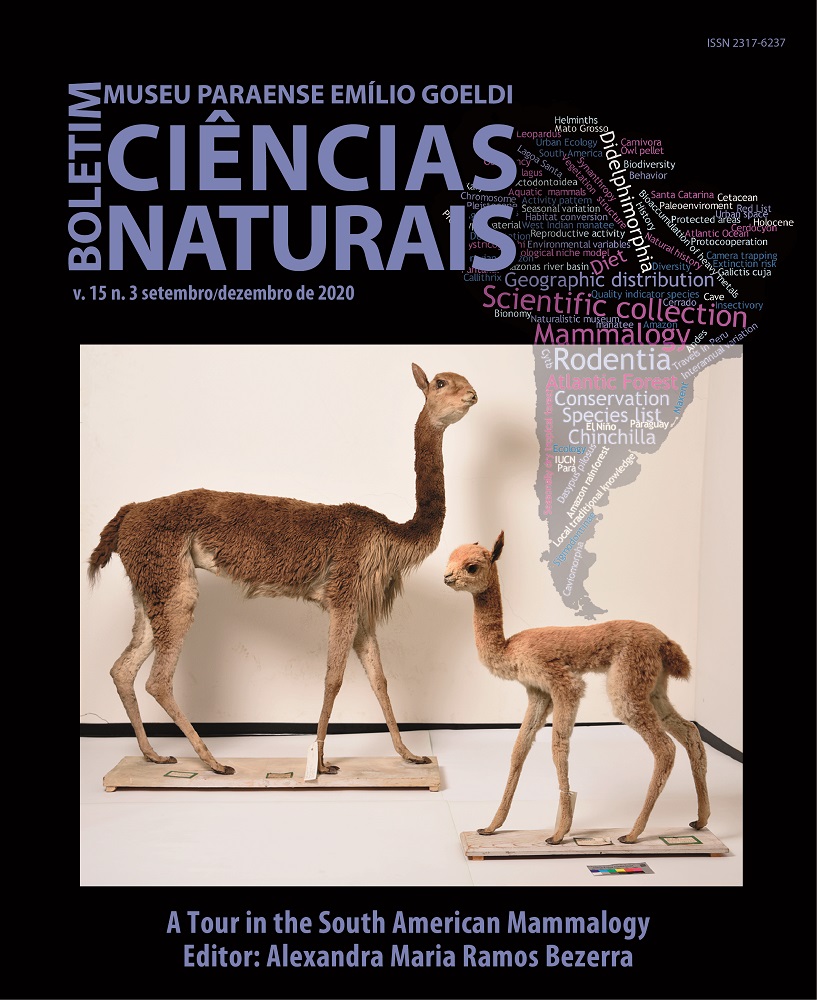Leporidae Fischer, 1817 (Mammalia: Lagomorpha) from a Quaternary deposit in Brazil: taxonomic and taphonomic comments
DOI:
https://doi.org/10.46357/bcnaturais.v15i3.299Keywords:
Cuvieri Cave, Lagoa Santa, Pleistocene, Holocene, Lagomorpha, PaleoenviromentAbstract
Leporidae (Lagomorpha) is a clade of small mammals that include rabbits and hares, rarely found in paleontological and archaeological sites and, therefore, leporids are poorly studied in South America. During the Quaternary, many limestone caves worked as natural traps for several groups of animals, including Leporidae. The Cuvieri Cave, part of the Lagoa Santa (Minas Gerais state, Brazil) karst complex, preserved a large amount of the remains of these animals. The present study describes the osteological material (mandibles, jaws and some appendicular bones) assigned to Sylvilagus cf. brasiliensis, which were found in the Cuvieri Cave. In addition, we reviewed the occurrences of these animals in Quaternary sites and compared the radiometric ages obtained with the frequency of occurrences of this taxon. The specimens were present in the late Pleistocene, reappearing in the middle Holocene and persisting until recently.
Downloads
Published
Issue
Section
License
Publication means fully assigning and transferring all copyrights of the manuscript to the journal. The Liability Statement and
Assignment of Copyrights will be enclosed with the notice of acceptance. All the authors must sign the document and return it to the journal.






